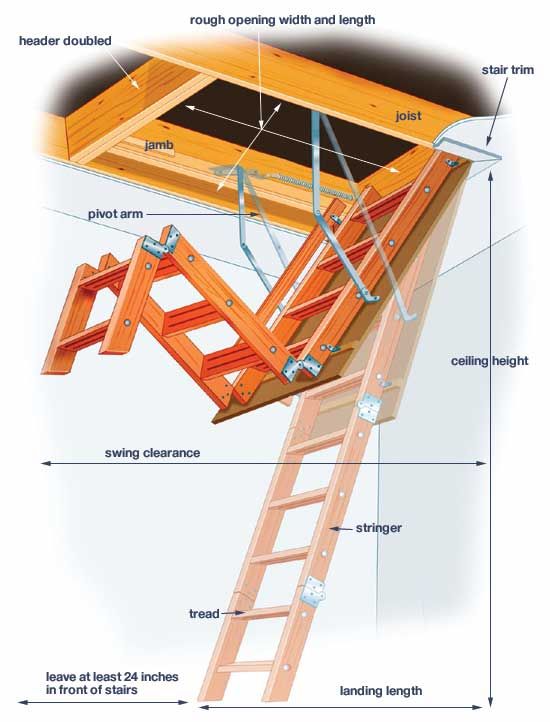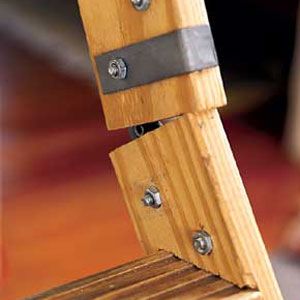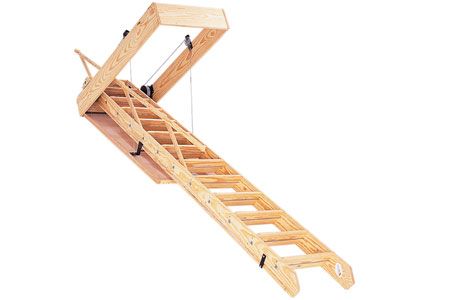Pull-down attic stairs are a convenient and space-saving solution for accessing your attic storage area. These retractable ladders provide easy entry to your attic without the need for a permanent staircase, making them ideal for homes with limited space. Whether you’re looking to install new attic stairs or replace an existing set, this guide will walk you through the process of sizing, choosing, and maintaining pull-down attic stairs to ensure safe and efficient access to your attic space.
Types of Pull-Down Attic Stairs
There are several types of pull-down attic stairs to choose from, each with its own unique features. Consider which of the following best suits your space:
- Folding stairs: These are the most common type of pull-down attic stairs, consisting of multiple sections that fold up when not in use.
- Sliding stairs: These stairs slide out from the attic opening and are ideal for spaces with limited clearance.
- Telescoping stairs: These stairs extend and retract like a telescope, offering a compact solution for tight spaces.
- Scissor stairs: These stairs use a scissor-like mechanism to extend and retract, providing a sturdy and stable option.
- Electric stairs: These motorized stairs offer effortless operation at the push of a button, ideal for those with mobility issues.
Benefits of Pull-Down Attic Stairs
Installing pull-down attic stairs offers several advantages for homeowners:
- Saving space: Unlike permanent staircases, pull-down stairs don’t take up valuable living space when not in use.
- Improved accessibility: Pull-down attic stairs provide easy access to attic storage without the need for a separate ladder.
- Enhanced safety: Properly installed attic stairs are safer than using a portable ladder to access your attic.
- Energy efficiency: Many modern attic stairs come with insulation features to help maintain your home’s energy efficiency.
Measuring for Pull Down Attic Stairs
When measuring your pull-down stairs, make careful note of the following areas for an accurate fit:
- Rough opening
- Ceiling height
- Swing clearance
- Landing space

Determining Rough Opening Dimensions
To ensure a proper fit, you’ll need to measure the rough opening in your ceiling where the attic stairs will be installed. Here’s how to do it:
- Measure the width of the rough opening at both the top and bottom of the framing using a tape measure.
- Measure the length of the rough opening at both sides of the framing.
- Take each measurement in three different spots to account for any variations.
- Use the smallest measurements for both width and length when selecting your attic stairs.
Most standard rough openings are 22½ or 25 inches wide by 54 inches long, but confirm your specific measurements before making a purchase.
Calculating Ceiling Height
You’ll also need to make careful note of the ceiling height when determining the length of attic stairs you’ll need. To measure your ceiling height:
- Measure from the floor to the ceiling at the location where the stairs will be installed.
- Add an additional six inches to this measurement to ensure the stairs will reach the attic floor comfortably.
Remember that attic stairs are available in various lengths to accommodate different ceiling heights, typically ranging from seven to 12 feet.
Considering Swing Clearance and Landing Space
For folding or sliding stairs, you’ll need to account for the space required when the stairs are fully extended. To determine this:
- Drop a plumb bob from the header of the rough opening.
- Measure the distance from the plumb bob to where the stairs will rest when fully extended.
- Ensure there’s enough clear floor space for the stairs to open fully and for you to safely ascend and descend.
Factors To Consider When Choosing Attic Stairs
Selecting the right pull down attic stairs involves more than just finding a model that fits your opening. Consider the material options, weight capacity and load requirement, and insulation and energy efficiency to choose the best option for your home and needs.
Material Options
Attic stairs are typically available in three materials, each with its own advantages:
- Wood: Often the most affordable option, wood stairs offer a traditional look but may require more maintenance.
- Aluminum: Lightweight and rust-resistant, aluminum stairs are a popular choice for their durability and ease of use.
- Steel: The strongest option, steel stairs can support higher weight capacities but may be heavier to operate.
Weight Capacity and Load Requirements
Attic stairs also need to safely support the weight of both people and items you’ll be carrying to and from the attic. Check the weight capacity of the stairs, which typically ranges from 250 to 375 pounds. Factor in the weight of the heaviest person who will use the stairs, plus any items they might carry. For added safety, choose stairs with a higher weight capacity than you think you’ll need. Remember, overloading attic stairs can lead to dangerous accidents and damage to your home.
Insulation and Energy Efficiency
Proper insulation around your attic stairs helps maintain your home’s energy efficiency. Look for these features for insulation in your stairs:
- Weather stripping: This helps create a tight seal when the stairs are closed, preventing air leakage.
- Insulated door panel: Some models come with an insulated door to further reduce heat loss.
- Airtight design: Stairs with an airtight design help prevent drafts and maintain consistent indoor temperatures.
Pull-Down Stair Safety and Installation Tips
This Old House general contractor Tom Silva knows the importance of attic stair safety firsthand. Once, he was halfway up a folding attic stair, trying to figure out why it wasn’t working right. Suddenly, a loose screw let go, a spring popped, and the stair swung out from under him. Tom crashed to the floor and broke his foot—an injury that forced him to spend the next six months on crutches.
The lesson? “An attic stair is a ladder,” says Silva. “You wouldn’t use a broken ladder, and you definitely shouldn’t use a broken attic stair.”
Silva’s experience may be extreme, but lots of people take their attic stairs for granted, or put up with stairs that don’t operate smoothly or have loose or broken parts. And when you step on it, it should feel solid. “An attic stair shouldn’t move at all under your weight,” Tom says.
Here are some other important safety and installation tips.
Proper Installation Techniques
- Follow manufacturer instructions closely, as installation methods can vary between models.
- Ensure the rough opening is properly framed and can support the weight of the stairs and users.
- Use the correct type and number of fasteners to secure the stairs to the framing.
- Adjust the stairs for proper alignment and smooth operation after installation.
- Consider hiring a professional if you’re unsure about any aspect of the installation process.
Safety Features To Look For
When choosing pull-down attic stairs, prioritize models with safety features such as:
- Non-slip and wide treads: These provide better traction and more secure footing when climbing up or down the stairs, especially when carrying items.
- Handrails: Some models include handrails for added stability and support.
- Locking mechanism: This prevents the stairs from accidentally opening or closing.
- Safety arms: These help stabilize the stairs when they’re fully extended.
Common Issues and How To Fix Them
Here are some frequent problems with pull-down attic stairs and how you might be able to fix them:
- Loose hinges: Tighten all nuts and bolts on the hinges and pivot arms.
- Squeaky operation: Apply a silicone-based lubricant to moving parts.
- Damaged treads: Replace individual treads or consider replacing the entire stair unit if multiple treads are damaged.
- Broken springs: Replace the springs following the manufacturer’s instructions.
- Gaps around the door: Install weatherstripping to improve the seal and energy efficiency.
When To Replace Instead of Repair
While many issues can be repaired, there are times when getting a replacement is the better option, such as if multiple components are damaged or worn, of if the stairs are old and lack modern safety features. Additionally, you may want to get a replacement if you find yourself constantly fixing issues with your stairs, or if your weight requirement or accessibility needs have changed. If you’re replacing your attic stairs, consult our attic stair installation guide.

Our Conclusion
Pull-down attic stairs are a valuable addition to any home, providing convenient access to often underutilized storage space. By carefully considering factors such as measurements, materials, safety features, and energy efficiency, you can select the perfect attic stairs for your needs.

